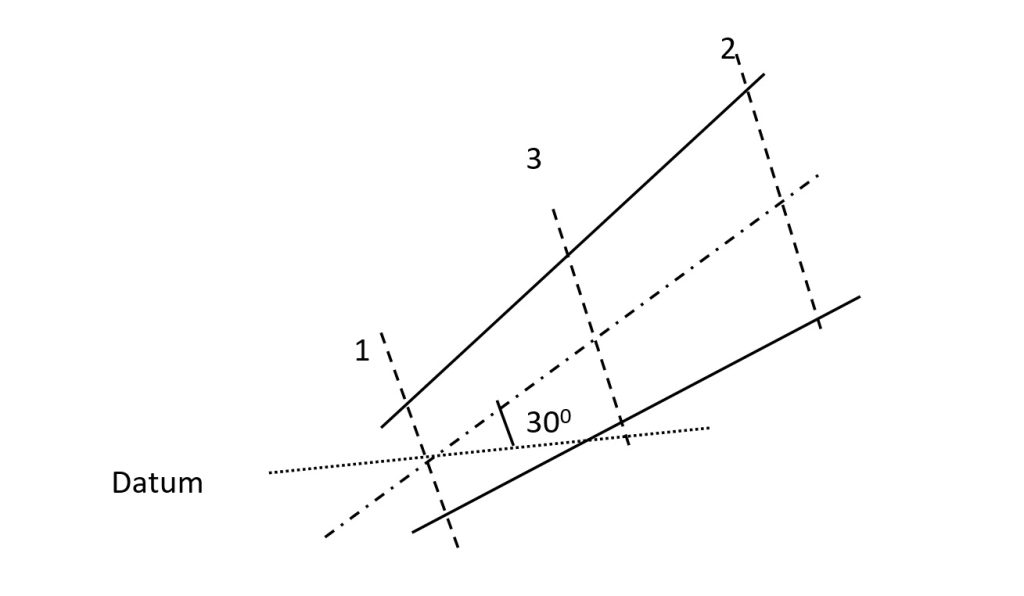Problem Statement
Find the rate of change of depth of water in a rectangular channel of 12 m wide and 2 m deep, when the water is flowing with a velocity of 1.5 m/s. The flow of water through the channel of bed slope 1 in 3000, is regulated in such a way that energy line is having a slope of 1 in 8000.
Given Data & Constants
- Channel width, \(B = 12 \, \text{m}\)
- Depth of flow, \(d = 2 \, \text{m}\)
- Velocity of flow, \(V = 1.5 \, \text{m/s}\)
- Bed slope, \(S_0 = 1 \text{ in } 3000 = \frac{1}{3000}\) (*Corrected from 1 in 300*)
- Energy line slope, \(S_f = 1 \text{ in } 8000 = \frac{1}{8000}\)
- Acceleration due to gravity, \(g = 9.81 \, \text{m/s}^2\)
Solution
1. Calculate the Froude Number (\(Fr\))
The Froude number is needed to determine the flow regime (subcritical or supercritical).
2. Apply the Gradually Varied Flow Equation
The rate of change of depth with respect to the distance along the channel (\(dy/dx\)) is given by the gradually varied flow equation.
The rate of change of depth of water is approximately 0.000235.
(This means the water depth is increasing at a rate of about 0.235 mm for every 1 meter traveled downstream).
Explanation of Gradually Varied Flow
This problem describes a state of **Gradually Varied Flow (GVF)**. This occurs when the depth of flow changes gradually along the length of the channel. It is different from uniform flow, where the depth is constant.
- Slopes: In GVF, the slope of the channel bed (\(S_0\)) is not equal to the slope of the energy line (\(S_f\)). The energy line slope represents the rate at which energy is lost due to friction.
- Equation: The gradually varied flow equation, \( \frac{dy}{dx} = \frac{S_0 - S_f}{1 - Fr^2} \), describes how the depth (\(y\)) changes with distance (\(x\)).
- Interpretation: In this case, the bed slope (\(1/3000\)) is steeper than the energy loss slope (\(1/8000\)), and the flow is subcritical (\(Fr < 1\)). The positive result for \(dy/dx\) indicates that the water surface is rising, creating a "backwater curve." This typically happens when a downstream obstruction, like a dam or weir, forces the water level to increase.



